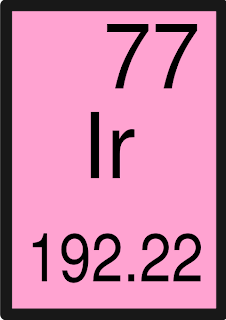The United States
Hearing about space from me is, at this point, probably less
than shocking. This week though, I am going to be telling all of you about the
plans that the United States has for its space program in the next decade or
so. I will also be telling you all about Russia's plans, though they seem a
little more fantastical and perhaps less realistic.
While
the budget for their project has not been approved yet (thanks Congress), the
2014 budget that President Obama released included a bizarre plan by NASA. It
would seem that NASA wants to "shrink-wrap" an asteroid and drag it
back to the vicinity of Earth for study.
Begin watching around 2:20 for the "Shrink-wrap mission"
As
you know, NASA's original plan was to send astronauts into deep space and
have them anchor onto an asteroid and study it there. Apparently (and
understandably), there are a lot of things standing in the way of this being a
plausible option. Some of these hindrances include the fact that we don't have
rockets powerful enough, NASA's budget could not handle the expenses, and that
we have no way to protect or preserve astronauts in deep space. Read more about
that plan - here.
Due
to the above factors, scientists have come up with an alterative method, one
that would involve using the telescopes that orbit Earth to identify a
relatively small asteroid (somewhere in the vicinity of 500 tons). Once an
asteroid that met the criteria was found, NASA would send a ship with an
inflatable cone on the front to the asteroid. The cone would inflate, engulf
the asteroid, and then deflate around it. After capturing the asteroid, the
ship would drag it back to Earth's system and put it in orbit around the moon.
The estimated costs of this mission are around $2.6 billion. It is expected that
the plan will be opposed in Congress, as many members would like to see NASA's
focus elsewhere.
Photo from NPR
Bringing
space to us! This is a very cool prospect, but it brings to mind the book
"Life As
We Knew It" by Susan Beth Pfeffer. I read this book back in maybe
middle school or junior high, but it is an interesting concept. In this series,
the moon was hit by an asteroid and forced closer to Earth, which
messes up everything! Now, I don't mean to be negative, but I am worried about
some seemingly small miscalculation that could send this asteroid Earth's way
instead of being safely placed in the moon's orbit. I also wonder if something
of this size could actually affect us. The asteroid is supposed to be around
500 tons, and the moon is supposed to be approximately 81 billion tons
(explanation of number - here), so
it is unlikely.
Russia
According
to Popular Science, Russia (or at least President Vladimir Putin) wants to funnel
more than $50 billion into their space program within the next several years.
This announcement came on the anniversary of Yuri Gagarin's launch
into space! The plan seems to be to modernize the Russian space system - a new
launch point in the next two years, a manned launch in the next five years, a
permanent moon base at some point, and wait for it... "the ability to take
out threats from other countries through
space." Hold the phones! I am fairly certain that there are laws
against that kind of thing (read the UN treaty - here). And not
only that, it is a terrifying prospect. Can you imagine if space became
militarized?!? It brings to mind Starship troopers, Ender's Game, and..oh, I
don't know... maybe the end of the world? Maybe space will be the final
frontier - emphasis on final. Excuse my Star Trek joke, and to be honest the
plans are very vague. Therefore, I
am not that worried about it now. But it is something to be watched.
NASA Budget article - here
Cool slideshow of the plan - here
Russia's (not yet well defined plans) -
here




